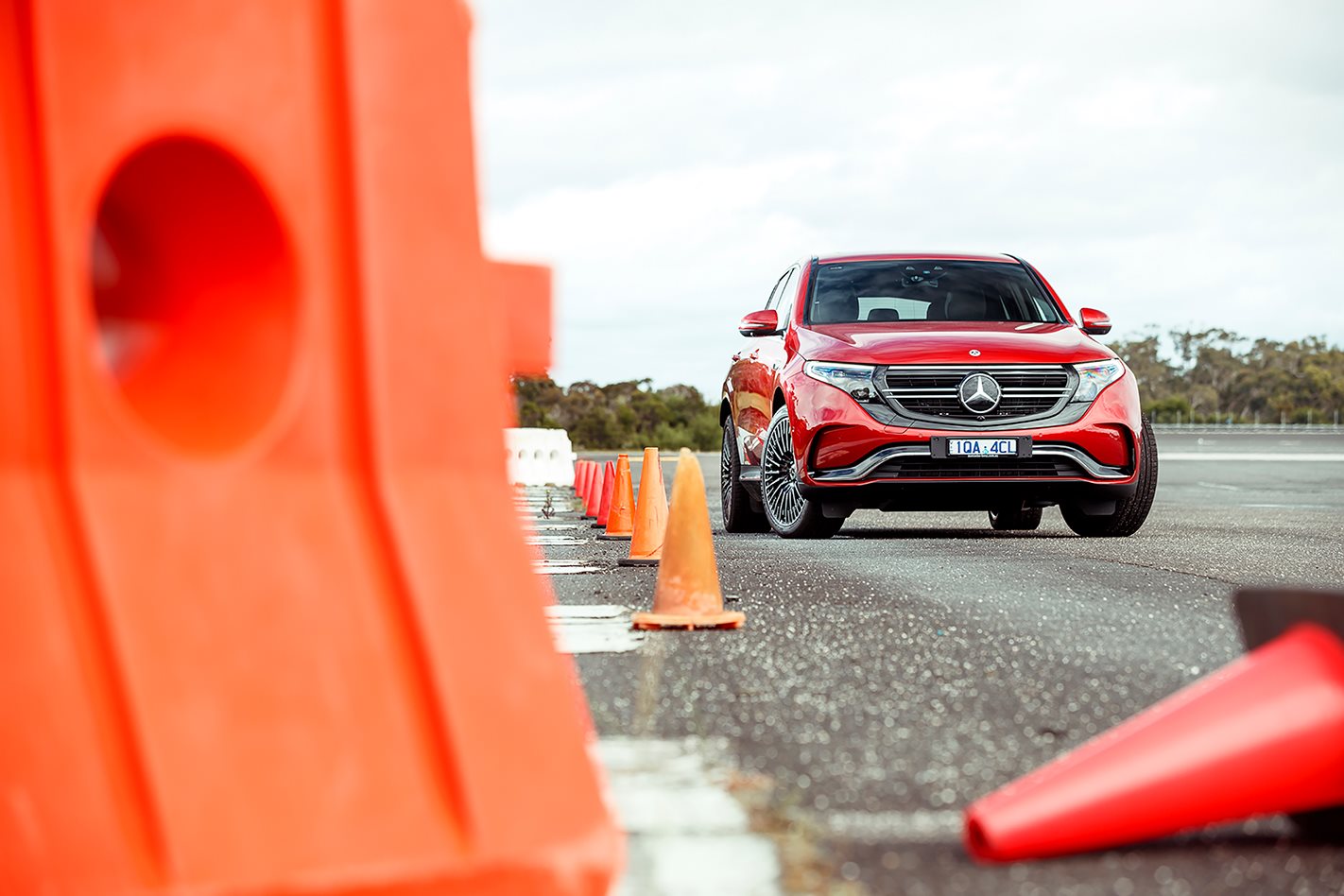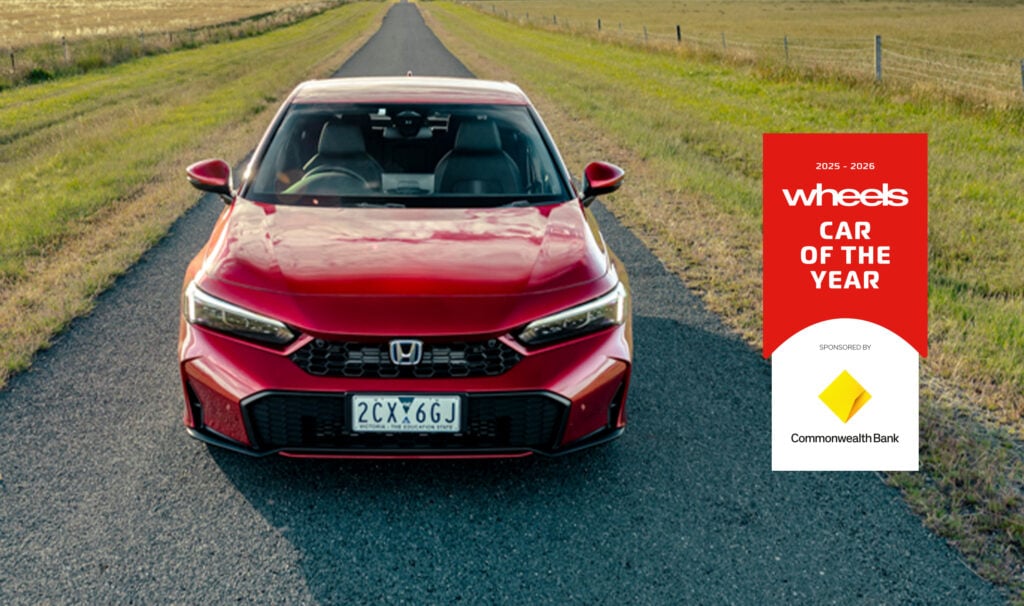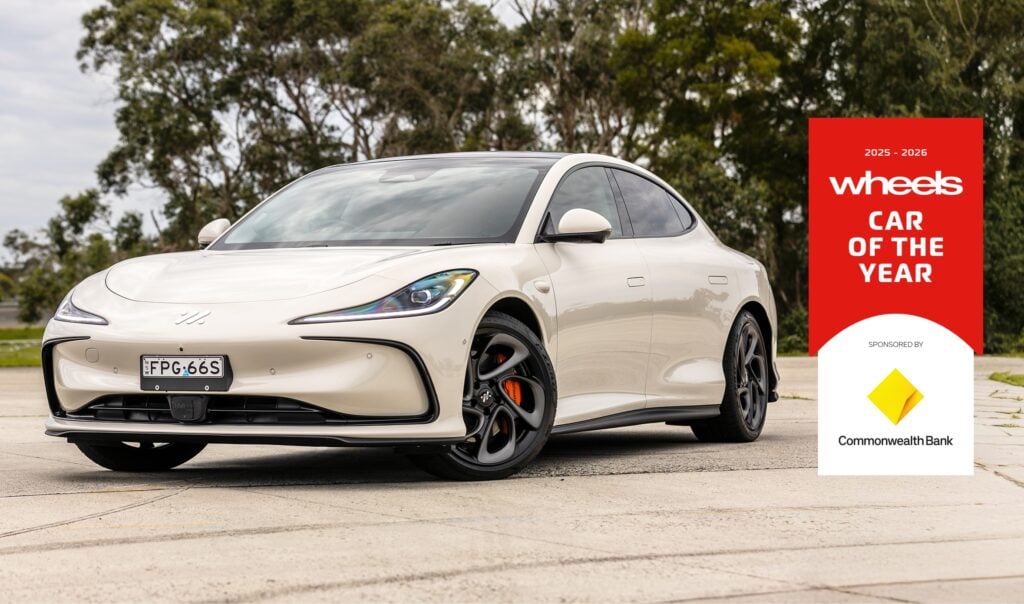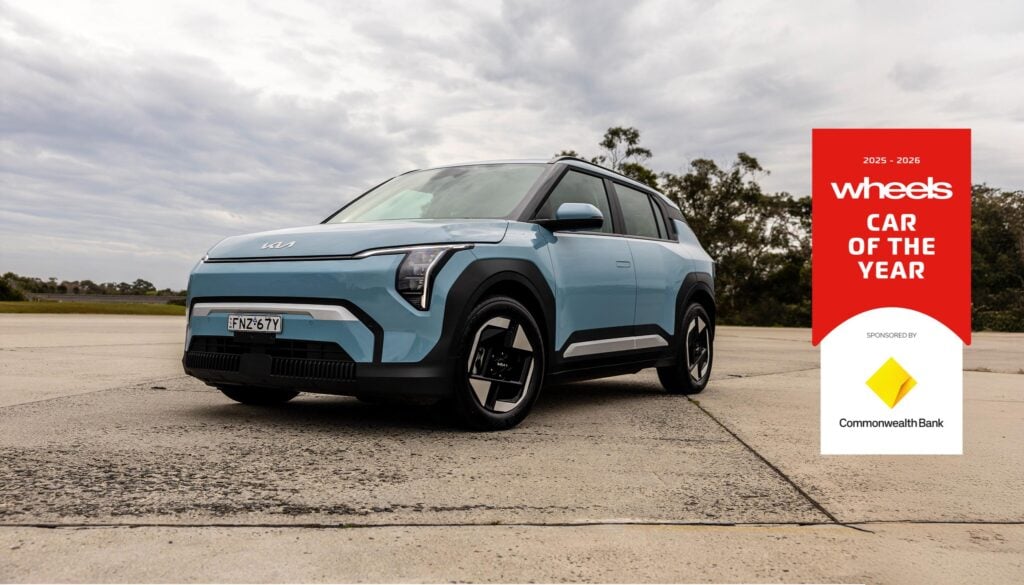Really, we should have known. After all, the writing was on the wall 12 months ago when the Jaguar I-Pace rocketed to the front of the pack during COTY 2019. The Jaguar’s advantage was so clear at the end of round one that deputy editor Andy Enright asked if we should all just go home.
“Do we really need another four days of testing?” he mused, only half jokingly. “I just can’t see how the I-Pace can lose.”
But lose the Jaguar did. Issues with its real-world range, various technical gremlins, plus packaging shortfalls saw the I-Pace’s seemingly unassailable lead cut away at the knees. But the stage was set. Any manufacturer who could field a comparable EV in a more complete package would surely be a shoo-in…
Enter the Mercedes-Benz EQC.

Weirdly, however, the Merc’s COTY journey couldn’t have been more different. Where the Jaguar swooshed silently and confidently onto centre stage from day one (only to wilt spectacularly under harsher scrutiny) the EQC arrived at Lang Lang carrying no such expectations. The early money was on the BMW 3 Series, Toyota RAV4 and Tesla Model 3, leaving the relatively plain-looking EQC to fade into the background. It was easy to see why.
Compared to its clearest rivals – the genre-busting and bravely designed I-Pace and Tesla Model X – the Mercedes is remarkably unadventurous. Only its subtly honed proportions, eye-catching wheel designs and unique LED light signatures distinguish it from Mercedes’ conventionally powered SUV range. And on paper, the EQC’s basic formula doesn’t exactly scream “ground-breaking innovator”, either.
Despite being 85 percent new, the EQC draws heavily from Merc’s existing ICE-powered mid-size SUV, the GLC. The two are built on the same platform, in the same factory, and share wheelbase dimensions and suspension hard points.
Some judges saw this as a clever manufacturing decision, as in these transitory times it allows Mercedes to up- or down-scale EQC production depending on demand. Others were less charitable, deriding the EQC as a halfway house. “Packaging and design is a stepping stone from ICE to EV,” quipped Byron. The fact the EQC is a whopping 420kg heavier than the I-Pace is another telling compromise evident from Mercedes’ decision not to invest in a bespoke EV platform.
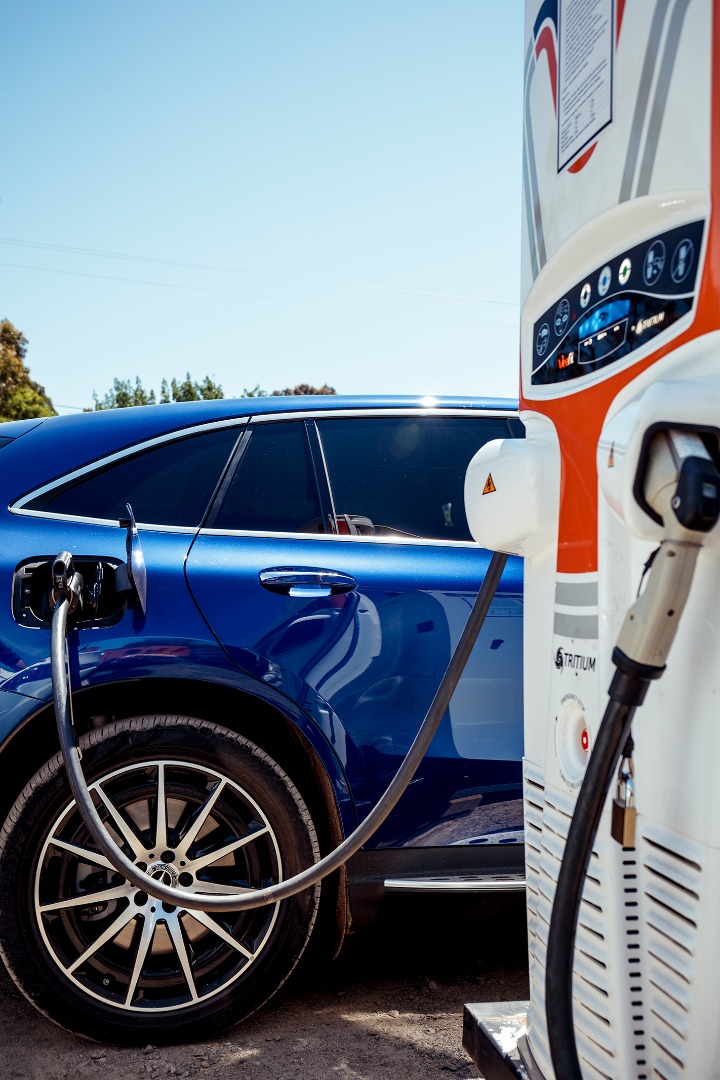
The EQC’s EV powertrain also copped some light criticism, at least initially. Utilising an 80kWh battery with twin electric motors for outputs of 300kW and 760Nm (the latter being some 64Nm more than an I-Pace), the EQC has a claimed WLTP range of 353km – a figure less than the I-Pace and Model X, but more than the yet-to-arrive Audi e-tron.
As Ash Westerman remarked: “Does this tech move the game on from the Tesla Model S and X? In terms of battery density, motors and range, they’re either on par or inferior, five years on. Is that good enough from Mercedes-Benz?”
Valid points, but then the EQC started to land some clean blows against the COTY criteria. And they landed heavily.
Efficiency is an obvious EV strong suit, and the EQC’s ability to shut down the rear motor under light loads also earned points for innovation. There were high marks for Technology too, and the EQC scored highly for Safety thanks to the standard inclusion of Mercedes’ advanced safety suite which brings adaptive cruise, lane-keep assist, blindspot monitoring, traffic-sign recognition and a 360-degree camera. A five-star ANCAP result cemented the EQC’s place as the safest car in this year’s field, with a strong
96 percent result for adult protection and 92 percent for children. The latter figure is the equal highest recorded by the safety body.

Further exploration of the rear seat also tempered any initial packaging concerns, and the (high-lipped) boot is a useful 500L.
“Great rear-seat comfort!” enthused Andy. “Vision from the back is excellent, there’s lots of knee- and toe-room, plus good seats.”
“Much better than an I-Pace’s,” agreed Ash.
Then the judges started to pound around Lang Lang’s ride and handling loop. No internal combustion engine has an answer for this level of instant torque and response. Full-bore acceleration is addictive and deceptively quick. Our 0-100km/h figure of 4.7sec beat Merc’s claim by almost half a second. And like the rest of the EQC, the performance is delivered with a cultured edge. There’s none of the unrelenting (and at times unpleasant) savagery you get from a Tesla Model 3 Performance. Instead, the EQC simply ladles on speed in effortless, muscular surges. It’s effective at washing pace off, too, despite its considerable 2480kg kerb weight. Of the two EQC 400s we had at COTY (the only difference being wheel size and tyre type), the one wearing 21-inch wheels recorded a dry stopping distance from 100km/h of 37.4m. For context, the similarly sized and significantly lighter Volkswagen Touareg recorded 38.5m.
The real highlight, however, is the softness of the chassis tune. Given the EQC’s rapid performance, there must have been a temptation to firm up the suspension (comprising struts with conventional coil springs up front, multi-links with air springs out back) to make the rest of the dynamics similarly sporty. Yet in a stroke of engineering brilliance, the chassis team fitted long-travel dampers and relatively soft springs. The result is the best-riding Mercedes-Benz SUV bar none.
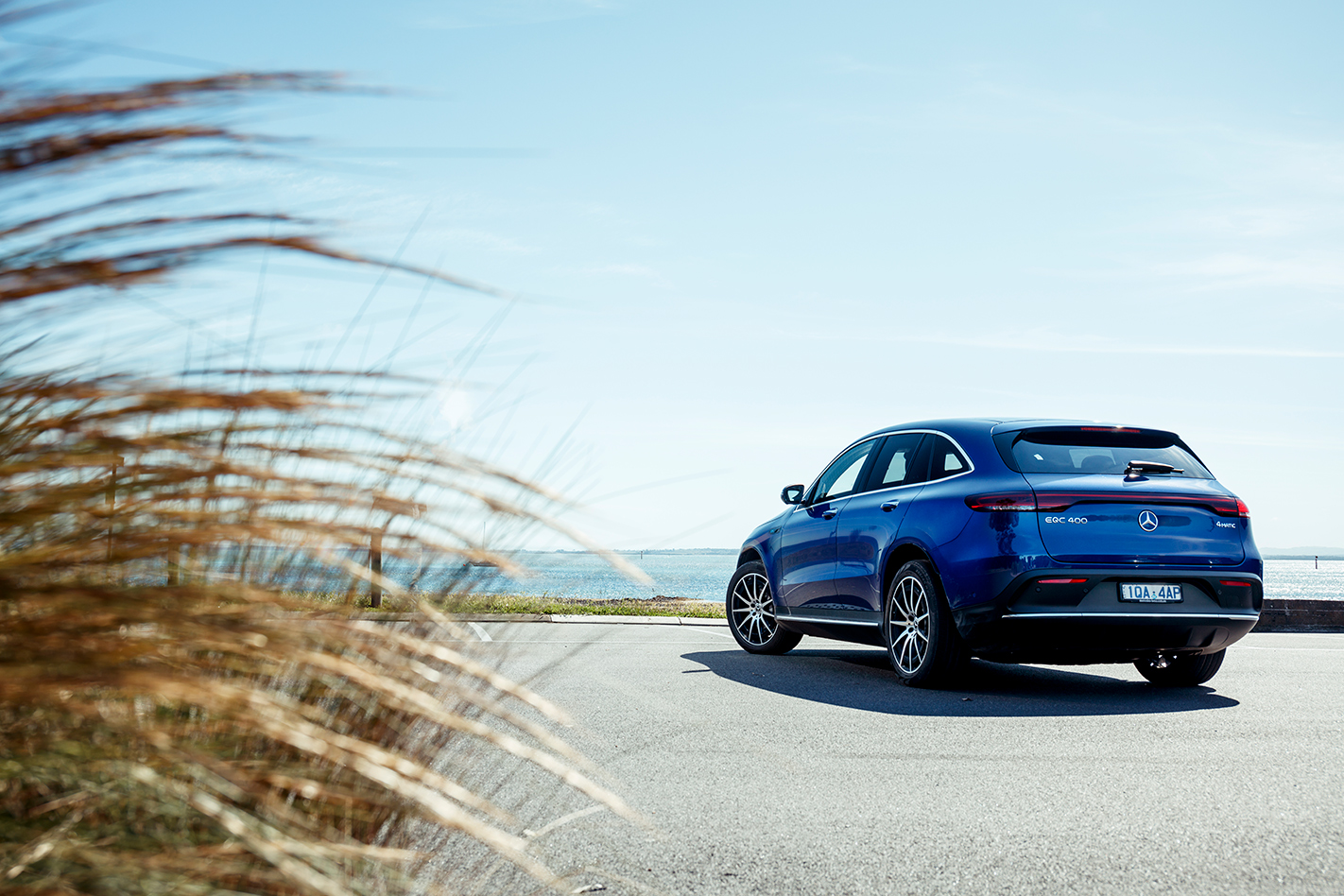
“Soft, but not sloppy,” noted Carey. “Brilliant wheel control. The best ride of any vehicle at COTY this year.”
Better yet, this overriding suppleness is paired with excellent body control to create a ride/handling balance that isn’t only comfortable, but also fluid, responsive and decently agile. Only the 911 and Tesla Model 3 topped the EQC for unfussed and planted changes of direction through the lane-change exercise. Couple this with deftly calibrated electronic safety systems and five levels of genuinely useful braking regeneration (which can be easily adjusted on the fly via wheel-mounted paddles from heavy regen to coasting) and the EQC delivers a driving experience that is both comfortable and engaging. Strong scores for Function, then.
Refinement is top drawer, too. Mercedes has been fastidious in its elimination of noise and vibration pathways – a prime example is a double bushing system that isolates the electric motors from the subframe and then the subframe from the body – and this attention to detail has produced one of the quietest cabins on sale. Only some wind rustle from the exterior mirrors above 100km/h mars the EQC’s eerie tranquillity, leaving the Mercedes in a class of its own compared to the other EVs at COTY for cabin refinement, especially when it comes to isolating tyre roar.
The EQC also neatly sidestepped the range pitfalls and system glitches that destroyed the I-Pace’s 2019 chances. Our official road-loop consumption average was 30kWh/100km. Further real-world testing saw that figure hover in the low 20s during less spirited driving. Customers will easily extract 340km from a full battery.
“Simply one of the most complete and competent vehicles I’ve ever tested on the COTY route,” wrote Byron. “Just so deeply impressive.”
Consensus can be hard to achieve at Wheels COTY, yet the EQC was anything but divisive. It was the only contender to score a unanimous vote from the judges in rounds one and two, and only one judge voted against it when deciding the winner. That last vote tallied six for the EQC and one for the Tesla Model 3.
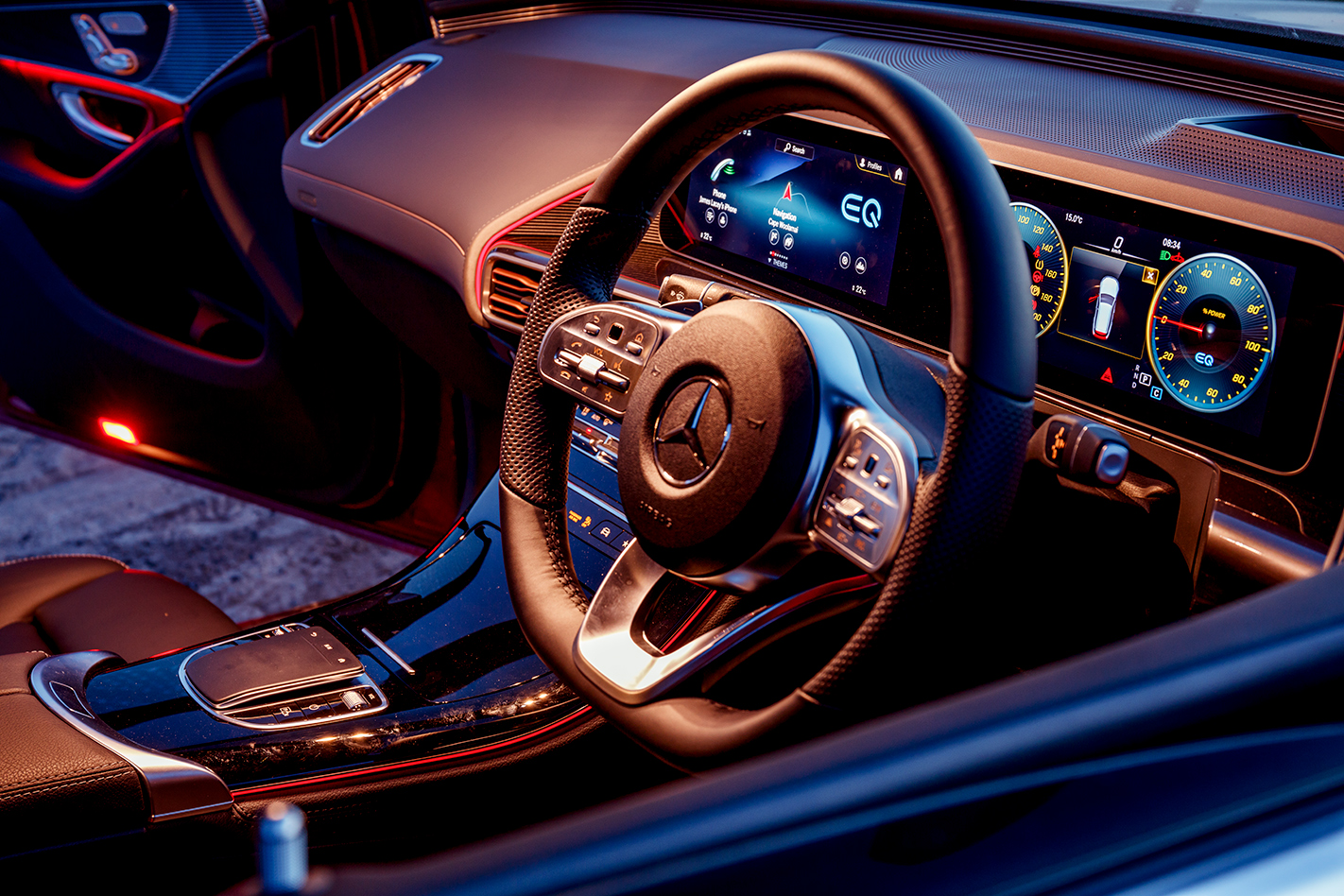
The only real point of contention came when discussing the EQC’s value proposition. In typical Mercedes Australia style, our EQCs arrive bursting with standard equipment, including the aforementioned safety gear, AMG body styling and a richly specced interior. Customers also gain five years of free charging on the Chargefox ultra-rapid network.
Yet there’s no escaping that the EQC’s $137,900 price tag is a significant ask, which dilutes its outright value proposition. Measure the EQC against its direct rivals, however, and the equation is easier to swallow. A Tesla Model X Long Range is both more expensive ($152,842) and not as richly equipped. And while an I-Pace has a lower initial asking price ($124,100), you need to spend north of $145K to achieve a similar spec level to the EQC. Viewed this way, most judges reasoned the Mercedes represents decent value.
So what does the EQC tell us about the future of driving in Australia? It tells us that it can be fast, luxurious and quiet.
That our gradual but inevitable transition from ICE to EV can be not only painless, but beneficial, both to the environment and to the task of day-to-day driving. But here’s the thing: the fact that the EQC is electric isn’t what clinched it the title. Regardless of its powertrain, the EQC’s fundamental strength is that it’s an excellent luxury SUV. It rides with surprising suppleness, it’s as quiet as a church mouse, and it delivers a level of polish and completeness that has been lacking from any Mercedes SUV that’s gone before it.
And crucially, it isn’t a moonshot. Wheels has never shied away from making brave decisions at COTY that applaud innovative thinking – the BMW i3 leaps to mind – but where that car felt ahead of its time, the EQC is an EV for the now. Sure, its powertrain tech might be industry standard rather than cutting edge, but nor does it feel like an experiment pitched at a reality years into the future. This is an SUV that affords no excuses or apologies, and one that finally refines the EV formula to such a polished degree that there are no sacrifices to the levels of quality, luxury and useability customers expect at this price point. And that, dear reader, is the masterstroke that’s been missing until now.

THE JUDGES’ COTY SCORECARD
Function: 3.8
Efficiency: 4.8
Safety: 4.0
Technology: 4.0
Value: 3.4
MERCEDES-BENZ EQC SPECS
BODY
Type: 5-door SUV, five seats
Boot capacity: 500L
Weight: 2480kg
DRIVETRAIN
Layout: Front and rear electric motors (east-west), AWD
Motors: 3-phase AC permanent magnet asynchronous (300kW/760Nm)
Transmission: Single-speed reduction gear
OTHER
Tyres: 235/50R20 – 255/40R21
Energy consumption: 21.4kWh/100km
CO2 emissions: 0g/km
Crash rating: 5-stars (ANCAP)
Price: $137,900


